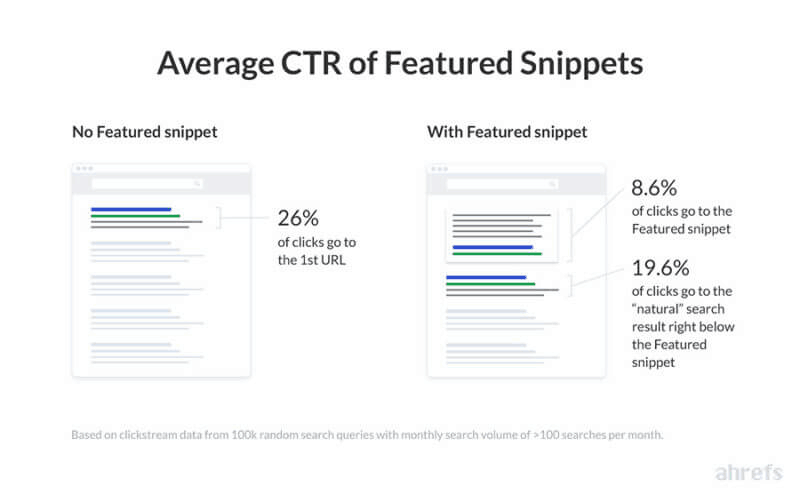What are the key digital marketing trends for 2020 that your business needs to consider to generate more traffic, leads, and revenue? What should be a priority in your digital marketing strategy? Here are a few digital marketing trends that suggest where savvy managers should invest their time and resources next year:
- Capture the Zero Position in Google Search to Get Found
- Content Marketing, Creation, and Distribution like a Rockstar
- Customer Retention with Marketing Data & Segmentation to save money
- Use Artificial Intelligence with Digital Marketing for efficiency
Now, let’s dive a little deeper into what we mean and why you should care.
Optimizing for Zero Position on the Search Engine Results Page (SERP)
The zero position refers to the first Google search engine results that appear above the organic search (SEO) listings. It’s sometimes called a featured snippet, rank zero, or P0. By optimizing for the zero position on the search engine results page (SERP), you can steal relevant traffic from your competition and appear above them in the top SEO results.

It sounds really easy, right? Not really, the content you create should be part of a bigger content marketing strategy. You’ll need to consider the intent, keywords, difficult to rank, search volume and customer experience while providing content that dominates the zero position. The most common types are content are:
- Answers to Questions (Who, What, When, Where, and Why)
- How-tos or instructions
- Definitions
- Comparisons
- Price/Cost Breakdowns
- Best of Lists
- Frequently Asked Questions
Don’t forget to add a call to action to the content.
Changing of Content Marketing, Creation, and Distribution
Content Marketing will continue to evolve in 2020. User and search intent will drive content creation and development with data being collected to provide better results through machine learning or artificial intelligence. Customers want to receive content tailored to their interests and needs. Your competition is going to focus more on catering to voice searches via mobile and smart speaker devices.
The creation of content should be in different formats to accommodate the user’s intent, personalization, voice search, and to increase your chances to appear in the featured snippets. Use the content that is delivering results and distribute it across platforms in a way that is helpful to your audience.
Improving Customer Retentions with Data & Segmentation
It takes less money to keep your existing customers happy so we recommend more effort into the middle and last stages of the buyer’s journey. Happy customers tend to tell their friends and provide referrals to help increase revenue. They are also more likely to give your direct and honest feedback about issues to improve your brand.
Be sure to keep them informed on your organizational changes or processes that would impact your relationship through email marketing or engage with them on social media. By collecting data and segmenting your customers, you have an opportunity to save costs while delivering on your products and services.
Leveraging of Artificial Intelligence for Digital Marketing
Artificial Intelligence (AI) has been used in digital marketing going back to 2013 with Facebook. Here is a list of the most common uses of AI in digital marketing:
- Voice Search
- Programmatic Media Buying
- Ad Targeting
- Re-targeting
- Marketing Automation
- 1:1 dynamic emails

Prioritize from the list and develop an action plan to implement. Using one or more of these could help to increase relevant traffic to your website, get more leads, and improve your overall revenue growth.
Don’t have the time or expertise to keep up! We keep up with the digital marketing trends so you don’t have to. Give us a call to learn more about 2020 digital marketing trends that will impact your business.
Conclusion
The 4 digital marketing trends for 2020 is not a complete list. You will be on the right track if you start by optimizing for zero position, use content marketing more strategically, improve customer retention, and use artificial intelligence with digital marketing when the opportunity is available.
We wanted to identify the trends that would improve your site traffic, help you to generate more leads, and increase your sales within budget. It’s also important to understand the digital marketing trends and how they will impact the competitive landscape.
Want more information on the top 2020 digital marketing trends? Check out the list of references:
4 Major Marketing Trends for 2020 and Beyond on Entrepreneur
What’s new? What’s next? 6 essential marketing trends for 2020 – Smart Insights


